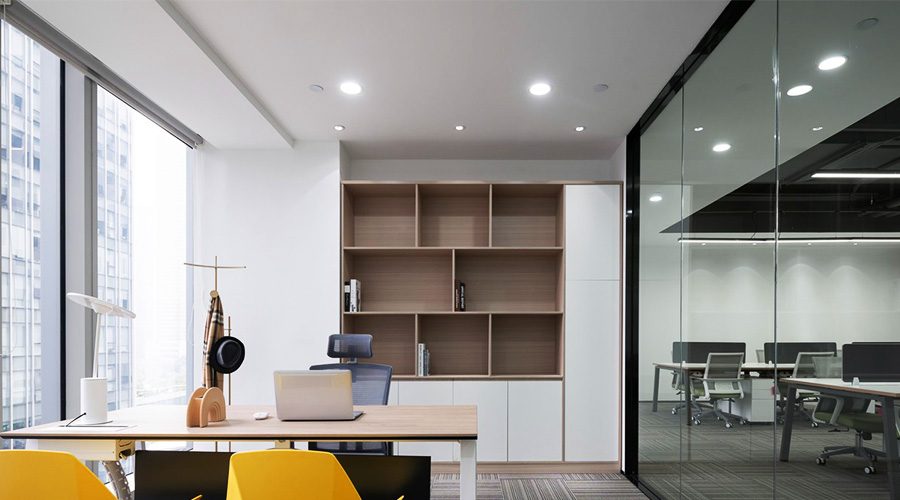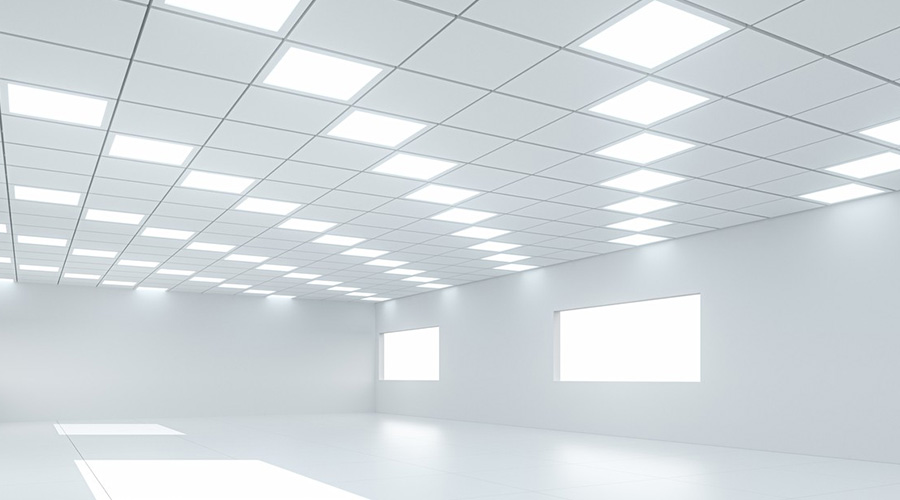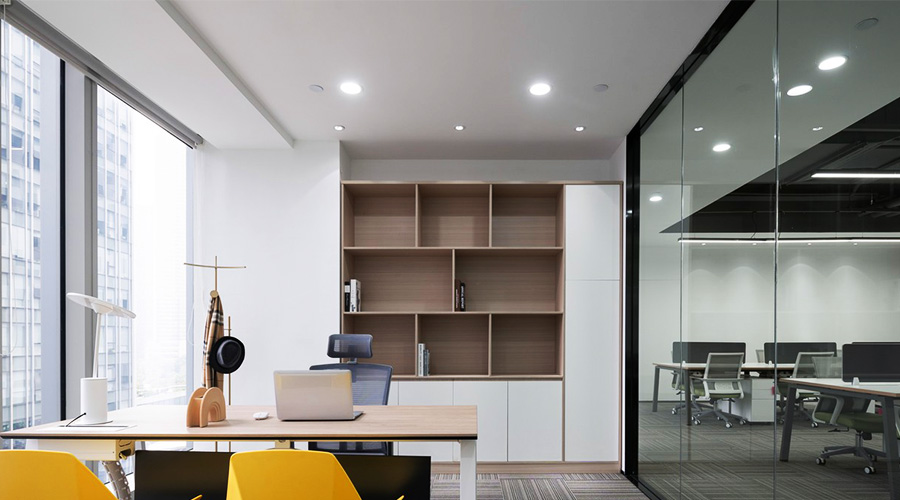As businesses continue to adopt more sustainable practices, LED commercial lighting fixtures have become the go-to solution for energy efficiency and long-term savings. However, selecting the right LED lights for commercial applications isn’t just about picking any fixture off the shelf. It’s essential to understand various technical parameters that determine how well an LED light performs in different environments.
In this blog, we’ll explore the key parameters of LED lighting to help you make informed decisions for your commercial lighting needs.
1. Luminous Efficacy: Getting More Light for Less Energy
Luminous efficacy, measured in lumens per watt (lm/W), indicates how efficiently an LED fixture converts electrical energy into visible light. In simple terms, it’s a measure of brightness output relative to energy consumption. The higher the lumens per watt, the more efficient the light source.
For commercial spaces, choosing fixtures with high luminous efficacy helps reduce electricity costs while ensuring bright, well-lit environments. Top-tier commercial LED fixtures often exceed 120 lm/W, making them ideal for warehouses, retail stores, and office spaces.
2. Color Temperature: Setting the Mood and Functionality
Color temperature, measured in Kelvins (K), dictates the color appearance of the light, ranging from warm to cool tones. Understanding the color temperature is crucial when selecting LED lights for different commercial settings:
- Warm White (2700K-3000K): Suitable for hospitality spaces like restaurants, cafes, and lounges, where creating a cozy, inviting atmosphere is a priority.
- Neutral White (3500K-4100K): Best for retail stores, showrooms, and work environments where balanced, natural light is needed.
- Cool White (5000K-6500K): Ideal for offices, hospitals, and warehouses where bright, clear illumination is essential for productivity and safety.
Choosing the correct color temperature ensures that the lighting complements the functionality of the space.
3. CRI (Color Rendering Index): Seeing Colors Accurately
The Color Rendering Index (CRI) measures how accurately a light source displays colors compared to natural sunlight. The CRI scale ranges from 0 to 100, with higher values indicating better color accuracy. For most commercial spaces, a CRI of 80 or higher is recommended, but for environments like art galleries, retail spaces, or design studios where color accuracy is critical, a CRI of 90 or above is preferred.
High CRI lighting ensures that products, materials, and surroundings appear true to their natural colors, enhancing the visual experience for customers and employees alike.
4. Beam Angle: Controlling Light Spread
The beam angle refers to how light is distributed from the fixture, measured in degrees. It affects the coverage area of light and plays a crucial role in determining how effectively a space is illuminated.
- Narrow Beam (15°-30°): Best for highlighting specific areas or objects, such as display shelves, artwork, or architectural features.
- Wide Beam (60°-120°): Ideal for general lighting in large areas, like office spaces, open-plan retail stores, or industrial facilities.
For commercial settings, selecting the right beam angle ensures optimal light distribution without wasting energy or creating overly bright spots.
5. Lifespan and Luminaire Maintenance
One of the primary advantages of LED fixtures is their long lifespan, often exceeding 50,000 hours. This makes them a perfect fit for commercial spaces where replacing lights frequently can be a hassle and a financial burden. However, the lifespan of an LED fixture is affected by several factors, such as heat management and the quality of the components used.
To maximize the longevity of your LED fixtures, it’s essential to invest in high-quality products with effective heat dissipation features. Proper thermal management ensures the LEDs don’t overheat, maintaining their brightness and performance over time.
6. Dimming Capabilities: Flexibility for Varying Needs
Many commercial spaces require flexible lighting solutions, and dimmable LED fixtures provide just that. Dimmable LEDs allow you to adjust the light intensity based on the time of day, task requirements, or specific ambiance needs.
For instance, in conference rooms or dining areas, the ability to dim the lights can enhance the environment’s functionality. Be sure to check if your commercial LED fixtures are compatible with the dimming systems in place to avoid flickering or malfunctioning.
7. IP Rating: Durability in Harsh Conditions
The Ingress Protection (IP) rating indicates how well an LED fixture is protected against solids (like dust) and liquids (like water). Commercial spaces, especially industrial environments, require fixtures with appropriate IP ratings to ensure durability in harsh conditions.
- IP20: Suitable for indoor, dust-free environments like offices or retail spaces.
- IP65 and Above: Ideal for outdoor applications or industrial areas where exposure to dust, water, and extreme temperatures is common.
Choosing the right IP rating for your fixtures ensures long-term performance, even in challenging conditions.
8. Power Factor: Enhancing Electrical Efficiency
The power factor measures how effectively electrical power is used by a lighting fixture. A power factor closer to 1.0 indicates a highly efficient fixture, where most of the electricity consumed is converted into light. Commercial LED fixtures typically have a power factor above 0.90, ensuring reduced energy waste and lower utility bills.
For businesses focused on sustainability, high-power-factor fixtures also help reduce the overall carbon footprint.
9. Flicker-Free Technology: Enhancing Comfort and Well-Being
Flickering in LED lighting can cause eye strain, headaches, and discomfort for employees and customers. Ensuring that your LED fixtures use flicker-free technology is crucial in commercial settings, especially in offices, retail stores, and healthcare facilities where people spend long hours under artificial light.
By investing in high-quality flicker-free LEDs, you can improve comfort, productivity, and well-being in your workspace.
Conclusion
Selecting the right LED commercial lighting fixtures involves more than just choosing the brightest or most energy-efficient option. Understanding key parameters such as luminous efficacy, color temperature, CRI, beam angle, and IP ratings can significantly enhance the lighting experience in your business, contributing to both operational efficiency and a more pleasant atmosphere for employees and customers.
When you invest in high-quality LED fixtures tailored to your specific needs, you’re not just cutting costs—you’re also improving the functionality and aesthetics of your commercial space.
Ready to upgrade your commercial lighting? Explore our range of advanced LED commercial lighting fixtures designed to meet the diverse needs of modern businesses.






